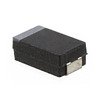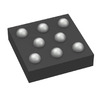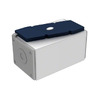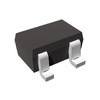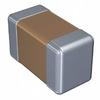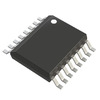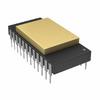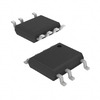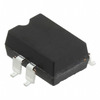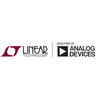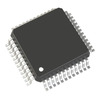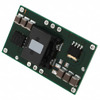E91 Energizer AA Alkaline Battery: Features, Specifications and Comparisons
This article explores the E91 carbon monoxide battery, a standout non-rechargeable power source tailored for specific electronic applications. With its unique characteristics distinct from rechargeable alternatives, we delve into a comprehensive examination of its features, technical specifications, and inherent advantages. Understanding these aspects allows you to make more informed decisions when selecting batteries for critical applications across various industries.Catalog

Overview of the E91 Batteries
E91 batteries have gained recognition for their robust power, extended lifespan, and ability to withstand challenging conditions, making them a preferred option spanning healthcare, emergency services, and entertainment. These fields regularly demand a power source that ensures reliability due to the inherently operations involved. Energizer AA alkaline batteries become an ideal choice thanks to their superior performance, dependability, and cost-efficiency.
Catering to entities that consistently need trustworthy batteries, E91 boasts a unique energy retention pledged to prolong operation. Fields dealing with precision and unwavering energy supply, such as those involving intricate medical devices or urgent response systems, recognize that E91 adheres to demanding criteria. These batteries excel in a broad spectrum of temperatures, ranging from -30°C to 55°C, guaranteeing stable performance from chilly storage areas to sweltering outdoor environments.
E91 batteries offer a shelf life of at least four years, an important detail prominently marked with expiration dates. This allows organizations to stockpile them without immediate fears of performance deterioration, aligning with effective inventory management where constant battery access is needed. Standing out with zero added mercury, the E91's environmental compatibility aligns with evolving corporate sustainability initiatives that emphasize safe disposal practices.
Features of E91
Enhanced Energy Density
The E91 battery offers increased energy density, providing boost in power relative to its size compared to conventional batteries. This feature not only supports prolonged usage but also aids in the miniaturization of powered devices. This is beneficial in sectors that prioritize compact technology solutions. Reflecting on the evolution of technology, merging power with size efficiency has often catalyzed innovation.
Consistent Service Adaptability
This battery maintains reliability across a spectrum of usage scenarios, accommodating diverse power demands effectively. Through years devoted to technology evolution, enhancing device performance has proven for ensuring satisfaction. This adaptability addresses the demand for power sources that effortlessly support varying energy requirements without sacrificing efficiency.
Cold Climate Excellence
Excelling in cold environments, the E91 retains operational efficiency even in low temperatures. Achieving this involves intricate chemical formulations, drawing from decades in developing cold-resistant technologies. This reliability offers you in colder regions peace of mind, assured that their devices will function reliably under harsh conditions.
Internal Resistance Minimization
By reducing internal resistance, the E91 ensures a stable and dependable power output, thereby improving device functionality. This attribute reflects a broader understanding within the technology industry that efficient energy transfer is instrumental to reliable performance. Detailed analyses of energy systems have consistently highlighted the contributions of internal efficiency.
Longevity in Storage
The E91 is designed for extended shelf life, showing reduced self-discharge over time and maintaining usability while inactive. This ties into practices in inventory management and resource conservation and emphasizes reducing waste and optimizing the use of assets. Many have long prioritized enhancing battery lifecycle performance to ensure long-term usability.
Advanced Leakage Prevention
The battery incorporates advanced construction features that reduce the risk of leakage, thereby protecting devices from potential harm. These advancements reveal knowledge in material resilience and precision design, which have been fine-tuned over decades while addressing similar challenges across technical fields. Guaranteeing device safety and integrity remains a concern related to confidence in battery technology.
E91 Technical Specifications
The technical specifications of the Energizer E91 battery offer a detailed exploration of the battery's traits and functionality measures.
|
Type |
Parameter |
|
Mount |
External |
|
Series |
E91 |
|
Part Status |
Active |
|
Max Operating Temperature |
55°C |
|
Reach Compliance Code |
compliant |
|
Approval Agency |
IEC |
|
Shelf Life |
120 Months |
|
Shelf Life Start |
Date of Manufacture |
|
Outside Diameter |
14.5 mm |
|
Chemistry/Technology |
Alkaline |
|
Height |
50.5mm |
|
RoHS Status |
Non-RoHS Compliant |
|
Weight |
22.679619g |
|
Size / Dimension |
0.57Dia x 1.99 H 14.5mmx50.5mm |
|
Moisture Sensitivity Level (MSL) |
Not Applicable |
|
Min Operating Temperature |
-30°C |
|
Termination Style |
Button Top (Extending) |
|
Output Voltage |
1.5V |
|
Storage/Refrigeration Temperature |
-40°F~-122°F / -40°C~50°C |
|
Battery Chemistry |
Alkaline Manganese Dioxide |
|
Battery Cell Size |
AA |
|
Battery Type |
PRIMARY |
|
REACH SVHC |
No SVHC |
Comparative Between E91 Alkaline and Lithium Batteries
Durability and Efficiency
When examining durability, lithium batteries are renowned for their extended lifespan compared to E91 alkaline batteries. This endurance is advantageous in situations demanding consistent power over prolonged periods, such as in electronics that rapidly consume energy. This translates to a reduction in maintenance worries; utilizing lithium-powered devices can lessen the occurrence of replacements, fostering operational efficacy. Nevertheless, the initial expense of lithium batteries is generally elevated, leading to evaluate cost-benefit ratios against performance enhancements.
Financial Implications
From a financial standpoint, E91 alkaline batteries present a more frugal initial spending option. They find widespread usage in scenarios where budgetary limits dominate, and power needs are sporadic rather than persistent. Others frequently pursue a financial midpoint, opting for the cost-effective E91 in less critical applications, thereby enhancing utility without exceeding financial boundaries.
Ensuring Voltage Harmony
Safeguarding voltage harmony is important when swapping battery types. Devices engineered for particular battery chemistries can encounter functionality issues or even incur damage if incompatible batteries are employed. Consequently, attention to the manufacturer's guidelines is prudent to avert incompatibility risks. A device's performance often depends on these intricate compatibility aspects, illustrating the significance of a balanced electrical relationship between the device and its power source.
Adaptability to Environmental and Practical Challenges
Lithium batteries excel in extreme temperature scenarios, maintaining reliable performance in conditions that would compromise the effectiveness of alkaline batteries. This versatility favors their selection for outdoor and remote uses where environmental uncertainty plays a part. Additionally, with their reduced weight, they enhance mobility, making them favorable in contexts that require frequent relocation.
Both E91 and lithium batteries fulfill substantial roles, influenced by particular operational needs and personal preferences. A thoughtful assessment involves juxtaposing up-front expenses with long-term advantages, recognizing usage scenarios, and considering device-specific demands. This layered analysis highlights the decision-making journey in choosing the right battery type, ultimately steering you toward a knowledgeable and tactical approach to power management.
E91 Battery Dimension

E91 Manufacturer Information
Based in St. Louis, Energizer has crafted a distinguished standing in the international arena, with its products permeating over 150 nations. This widespread distribution not only highlights the brand’s impactful presence but also reflects a nuanced approach to catering to the varied desires and expectations across the globe. The intricate dance of aligning with diverse consumer appetites and regulatory landscapes arouses curiosity about Energizer's strategic maneuvers in each unique market. Such flexibility may play a role in sustaining and potentially enhancing its market footprint amidst a fiercely competitive terrain. Energizer’s leading position in the battery sector suggests a formidable operational strategy that weaves together a global footprint, a diverse range of products, and the complexity of public company operations. Considering possibilities for future innovation, perhaps intensifying focus on green energy solutions or boosting product durability, invites speculation on possible pathways the company could explore. In an era of increasing demand for sustainable and dependable energy, companies like Energizer find themselves at a decisive threshold where they can markedly shape both environmental and economic futures.
About us
ALLELCO LIMITED
Read more
Quick inquiry
Please send an inquiry, we will respond immediately.
Frequently Asked Questions [FAQ]
1. What’s the maximum operating temperature of E91?
The battery is designed to function effectively at temperatures up to 55°C. This operational threshold suggests that for optimal performance, one should aim to stay within this temperature range. In everyday use, mindful consideration of this limit aids in preventing declines in efficiency or potential harm. When used in practical scenarios, ensuring sufficient airflow and minimizing exposure to extreme heat can help preserve battery life. Many often express satisfaction when utilizing protective enclosures or casing solutions to shield the battery's functionality, catering to diverse conditions.
2. Are Energizer E91 batteries rechargeable?
They are non-rechargeable. This attribute shapes their predominant use in contexts where swapping batteries is more convenient than recharging them. In practical terms, non-rechargeable batteries like the E91 gain appreciation for their dependability and steady energy output. Many value their straightforward application for occasions demanding continuous power delivery without recharge interruptions. Thoughtful planning concerning their use facilitates responsible disposal, harmonizing with sustainable environmental practices.
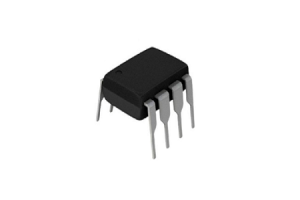
INA128 Amplifier: Equivalent, Specifications, and Datasheet
on October 31th

RL207 Silicon Rectifier: Features, Equivalent, and Pinout
on October 31th
Popular Posts
-

What is GND in the circuit?
on January 1th 2915
-

RJ-45 Connector Guide: RJ-45 Connector Color Codes, Wiring Schemes, R-J45 Applications, RJ-45 Datasheets
on January 1th 2477
-

Fiber Connector Types: SC Vs LC And LC Vs MTP
on January 1th 2065
-

Understanding Power Supply Voltages in Electronics VCC, VDD, VEE, VSS, and GND
on November 8th 1860
-

Comparison Between DB9 and RS232
on January 1th 1749
-

What Is An LR44 Battery?
Electricity, that ubiquitous force, quietly permeates every aspect of our daily lives, from trivial gadgets to life-threatening medical equipment, it plays a silent role. However, truly grasping this energy, especially how to store and efficiently output it, is no easy task. It is against this background that this article will focus on a type of coin cell battery that may seem insignificant on the...on January 1th 1703
-

Understanding the Fundamentals:Inductance Resistance, andCapacitance
In the intricate dance of electrical engineering, a trio of fundamental elements takes center stage: inductance, resistance, and capacitance. Each bears unique traits that dictate the dynamic rhythms of electronic circuits. Here, we embark on a journey to decipher the complexities of these components, to uncover their distinct roles and practical uses within the vast electrical orchestra. Inductan...on January 1th 1647
-

CR2430 Battery Comprehensive Guide: Specifications, Applications and Comparison to CR2032 Batteries
What is CR2430 battery ?Benefits of CR2430 BatteriesNormCR2430 Battery ApplicationsCR2430 EquivalentCR2430 VS CR2032Battery CR2430 SizeWhat to look for when buying the CR2430 and equivalentsData Sheet PDFFrequently Asked Questions Batteries are the heart of small electronic devices. Among the many types available, coin cells play a crucial role, commonly found in calculators, remote controls, and ...on January 1th 1532
-

What Is RF and Why Do We Use It?
Radio Frequency (RF) technology is a key part of modern wireless communication, enabling data transmission over long distances without physical connections. This article delves into the basics of RF, explaining how electromagnetic radiation (EMR) makes RF communication possible. We will explore the principles of EMR, the creation and control of RF signals, and their wide-ranging uses. The article ...on January 1th 1521
-

CR2450 vs CR2032: Can The Battery Be Used Instead?
Lithium manganese batteries do have some similarities with other lithium batteries. High energy density and long service life are the characteristics they have in common. This kind of battery has won the trust and favor of many consumers because of its unique safety. Expensive tech gadgets? Small appliances in our homes? Look around and you'll see them everywhere. Among these many lithium-manganes...on January 1th 1496



